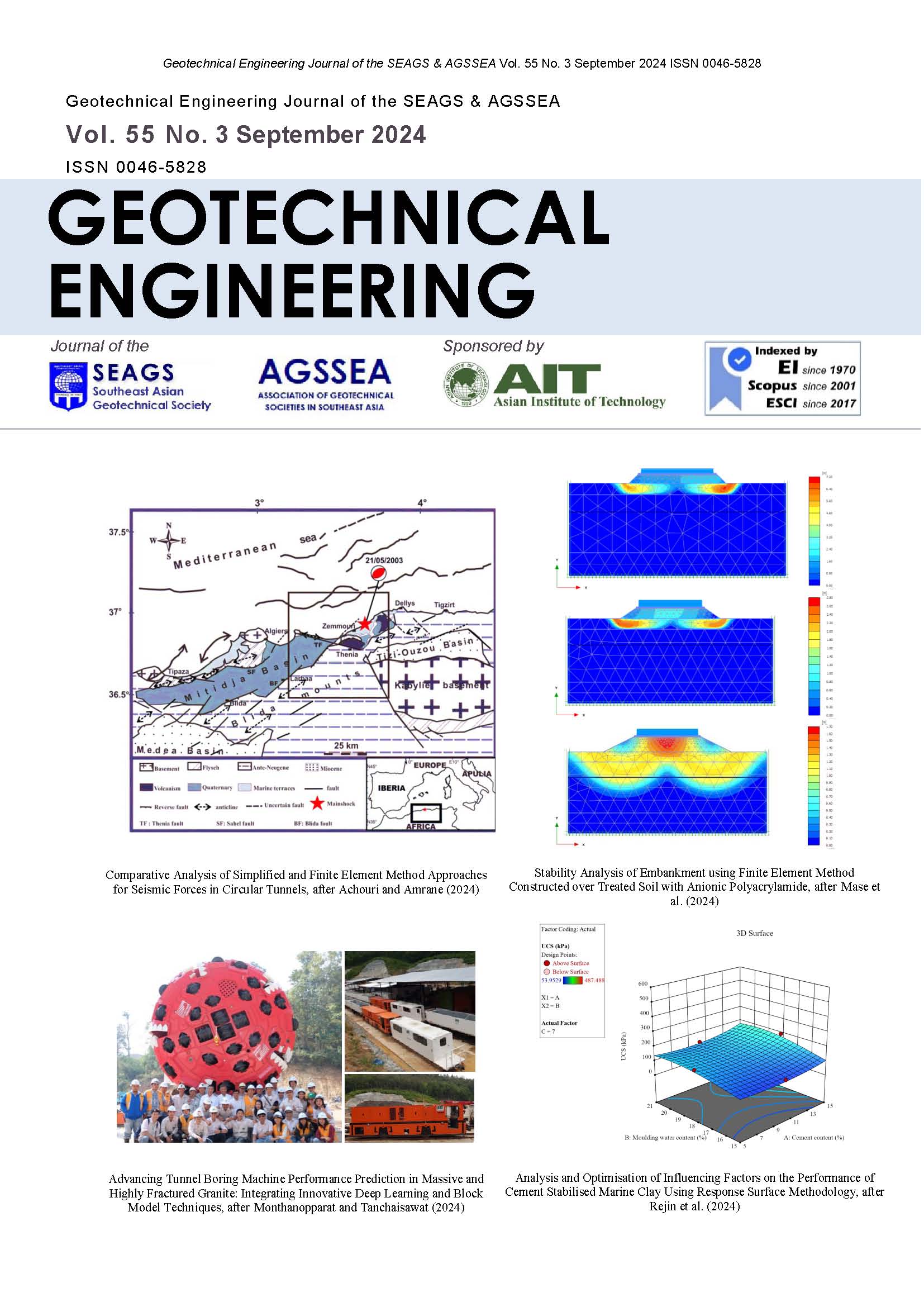Advancing Tunnel Boring Machine Performance Prediction in Massive and Highly Fractured Granite: Integrating Innovative Deep Learning and Block Model Techniques
Main Article Content
Abstract
Tunneling projects encounter challenges in predicting Rate of Penetration (ROP), often leading to cost overruns. This study introduces a deep learning approach, combining Deep Feed Forward (DFF) and Long-Short Term Memory (LSTM) techniques, to enhance accuracy. Focused on the Mae Tang - Mae Ngad Project and its geological complexities in massive and highly fractured granite rock conditions, the research aims to improve ROP predictions. The study demonstrates substantial improvements, revealing Root Mean Square Error (RMSE) values of 0.162 (m/h) for DFF and 0.216 (m/h) for LSTM. Notably, the models exhibit enhanced performance in massive rock conditions with an RMSE of 0.110 (m/h), while highly fractured granite shows an RMSE of 0.261 (m/h). These findings underscore the potential for more precise predictions, addressing historical inaccuracies that often lead to cost overruns. Integrating deep learning techniques proves valuable, offering a pathway for more reliable and cost-effective tunnel construction endeavors.
Article Details

This work is licensed under a Creative Commons Attribution-NonCommercial-NoDerivatives 4.0 International License.
Copyright © 2019 Association of Geotechnical Societies in Southeast Asia (AGSSEA) - Southeast Asian Geotechnical Society (SEAGS).


